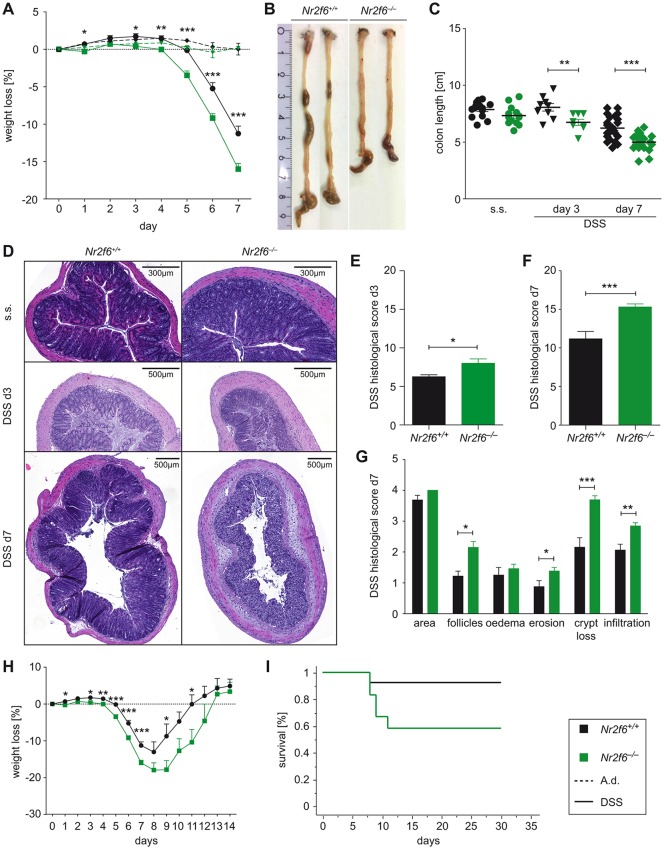Figure 1.
Nr2f6−/− mice are highly susceptible to dextran sodium sulfate (DSS)-induced colitis. (A) Weight loss in Nr2f6+/+ or Nr2f6−/− mice relative to initial weight treated with 3.5% DSS ad libitum, followed by 2 days of tap water (n=35, analysis of variance p<0.0001; t-test d3 p=0.01, d4 p=0.004, d5 p<0.0001, d6 p=0.0002, d7 p=0.0003). (B) Representative pictures of colons on day 7 after DSS induction. (C) Colon length of wild-type and Nr2f6−/− mice on day 0 (steady state (s.s.) day 3 (n=9, p=0.0081) and day 7 (n=25, p<0.0001) after DSS treatment. (D) H&E staining of colon sections of wild-type and Nr2f6-deficient mice at different time points (s.s., days 3 and 7). Histological severity scores of respective groups are shown on day 3 (p=0.027) (E) and day 7 (p=0.0005) (F) after DSS treatment. (G) Note the disruption of crypt structure (p=0.0002), erosion (p=0.048), follicle aggregation (p=0.009) and immune cell infiltration (p=0.0024) in Nr2f6−/− mice on day 7. (H) Weight loss curve of wild-type and Nr2f6−/− mice treated with 3.5% DSS for 5 days following a recovery phase with water from days 5 to 14. (I) Kaplan-Meier survival analysis of recovery mice showing 92.3% (12 out of 13) wild-type survivors compared to 58.3% (7 out of 12) surviving Nr2f6-deficient mice (p=0.046). Data are presented as mean±SEM error bars and are representative of at least two independent experiments if not stated otherwise. Unpaired Student’s t-test, * p<0.05.

